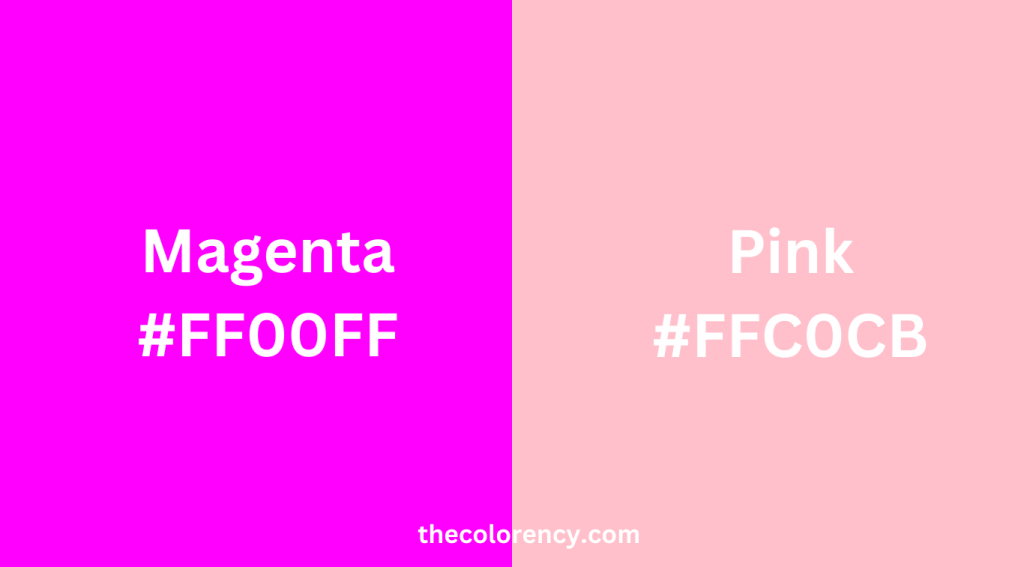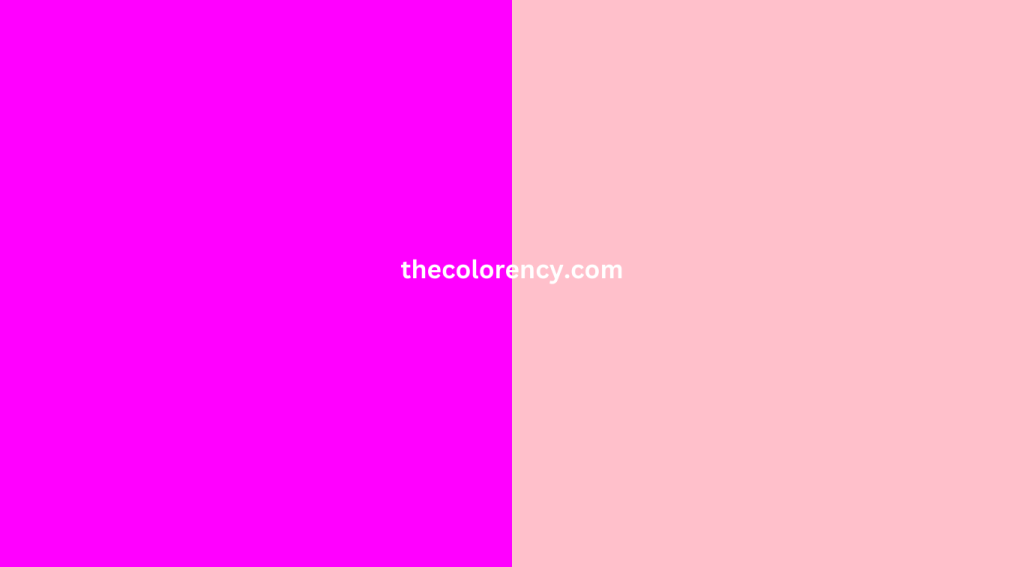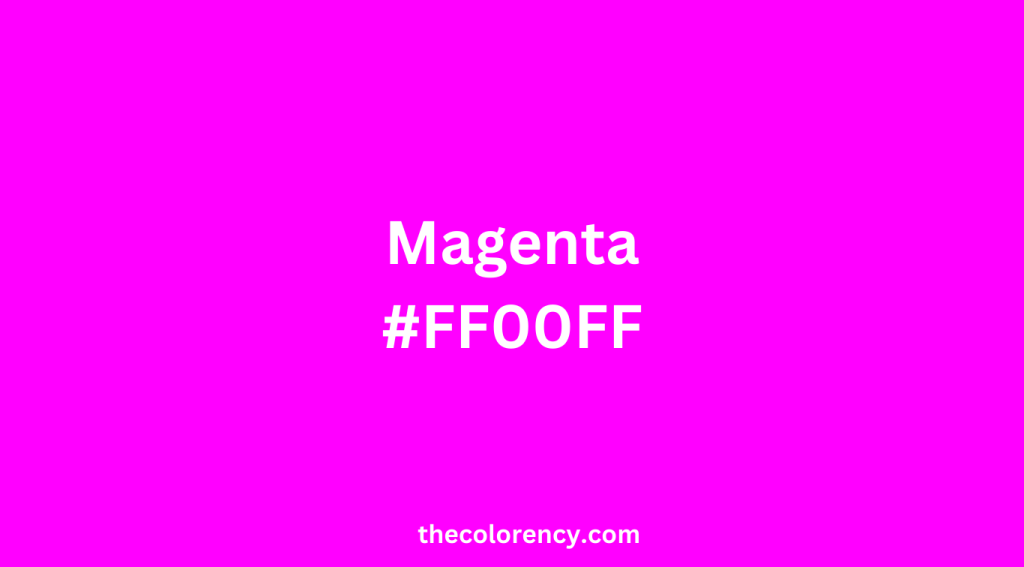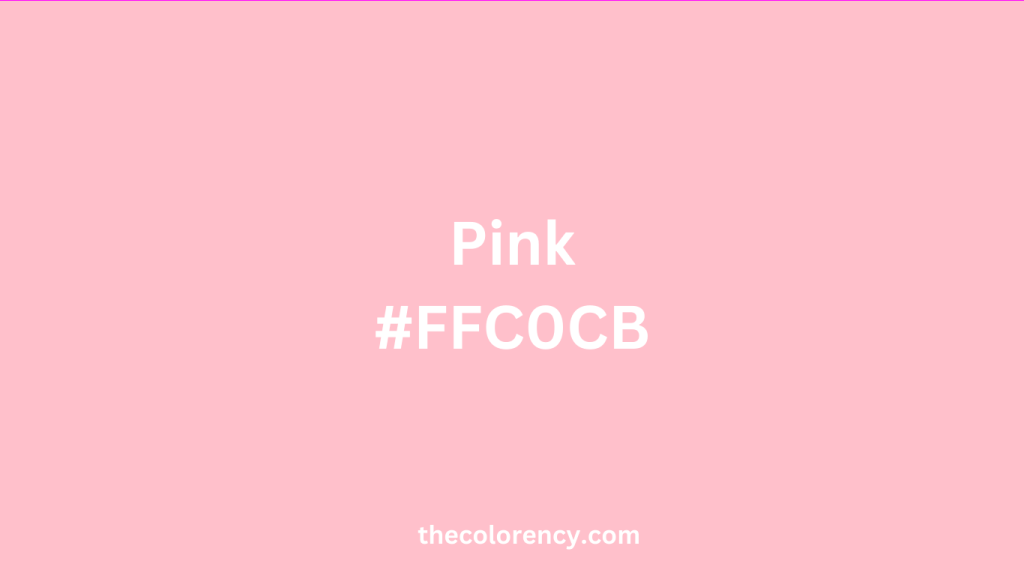
Magenta and pink are both derived colors, meaning they are created by mixing different hues together. So while they may seem similar at first glance, there are actually several key differences between the two.
Magenta Vs Pink:What’s The Different?

What’s Magenta
By mixing blue and red hues together, people create magenta, which is also known as fuchsia. It is a bright, intense color that often has a purplish tint to it. Magenta is commonly used in printing, particularly for producing high-quality photographs and images, and is often used as a primary color in the printing process.
What’s Pink
Pink is a lighter and less intense shade than magenta. It is created by mixing red and white hues together, resulting in a softer, more pastel-like color. Pink can range from a light, almost white shade to a darker, more vibrant shade, but it is generally a much softer and more subdued color than magenta.
Main Difference
Magenta and pink have distinct color properties that set them apart.
Difference In Code And Value
Here is a comparison chart showing the differences between magenta and pink in terms of their color hex code, RGB code, hue, saturation, and lightness.
| * | Magenta | Pink |
|---|---|---|
| Color Hex Code | #FF00FF | #FFC0CB |
| RGB Code | (255, 0, 255) | (255, 192, 203) |
| Hue | 300 degrees | 350 degrees |
| Saturation | 100% | 100% |
| Lightness | 50% | 87.5% |
Difference in cultural associations
Magenta is often associated with passion, creativity, and energy, while pink is more commonly associated with sweetness, innocence, and femininity. As a result, magenta is often used in branding and marketing for products and services that want to convey a bold and dynamic image, while pink is often used for products that want to convey a more gentle and nurturing image.
Magenta Vs Pink: Where Does The Name Come From?

The names magenta and pink both have interesting origins that reflect the history and evolution of the color spectrum.
Magenta
Magenta was named after the Battle of Magenta, a key battle in the Second Italian War of Independence that was fought in 1859. The color was first discovered and named by a chemist named François-Emmanuel Verguin who was attempting to create a new type of dye. He noticed that the color produced by the dye was very similar to the color of the uniforms worn by French soldiers in the Battle of Magenta, and so he decided to name the color after the battle. Magenta quickly became popular as a color in the fashion and design world, and it remains a popular color today.
Pink
The name pink has a more complex history. The word “pink” is believed to have originated from the Dutch word “pinck,” which referred to a small, perforated shell that was used to make a type of cloth that was often dyed a pale, reddish color. In English, the color that was associated with the cloth became known as “pinck” or “pinckey” over time, specifically referring to the pale reddish color. Today, people use the color term “pink” to refer to a range of pale, reddish hues, which evolved over time from the original association with the cloth.
Interestingly, the meaning of the word "pink" has shifted over time. In the 17th century, "pink" referred specifically to a type of yellowish-pink color that was popular for men's clothing. It wasn't until the 18th century that "pink" began to be associated with the pale, reddish hue that we know today.
What colors go with ?

You can pair magenta and pink with a wide range of other colors to create striking and harmonious color combinations, making them both versatile colors.
Matching Magenta With Other Colors
Gold
The boldness of magenta pairs well with the richness of gold. This combination is great for creating an elegant and glamorous look.
Gray
The softness of gray complements the intensity of magenta. This combination creates a sophisticated and modern look.
Orange
The brightness of orange creates a vibrant contrast with magenta. This combination is perfect for creating a bold and energetic look.
Navy blue
The deep and rich color of navy blue pairs well with magenta. This combination creates a classic and timeless look.
Teal
The coolness of teal creates a balanced and calming contrast with magenta. This combination is great for creating a tranquil and sophisticated look.
Matching Pink with Other Colors
White
The purity of white creates a clean and fresh look with pink. This combination is great for creating a romantic and feminine look.
Black
The drama of black creates a bold contrast with pink. This combination is perfect for creating an edgy and sophisticated look.
Lavender
The softness of lavender complements the sweetness of pink. This combination is great for creating a delicate and charming look.
Green
The vibrancy of green creates a lively and refreshing contrast with pink. This combination is perfect for creating a playful and cheerful look.
Navy blue
The depth of navy blue creates a classic and elegant contrast with pink. This combination is great for creating a timeless and sophisticated look.
Conclusion
| Category | Magenta | Pink |
|---|---|---|
| Definition | A vivid, purplish-red color | A pale to mid-toned shade of red |
| Hue | A warm color with a blue undertone | A warm color with a red undertone |
| Saturation | Highly saturated | Can vary in saturation from pale to highly saturated |
| Color Code | Hex: #FF00FF RGB: (255, 0, 255) | Hex: #FFC0CB RGB: (255, 192, 203) |
| Origin | Named after the flower “magenta” | Named after a type of flower called “pink” |
| Cultural Meanings | Love, passion, energy, creativity, and individuality | Romance, femininity, tenderness, and youthfulness |
| Usage | Often used in artistic expressions, fashion, and branding | Commonly used in fashion, cosmetics, and home decor |
In conclusion, while magenta and pink may seem similar at first glance, there are actually several key differences between the two. Magenta is a bold and intense color that is often associated with passion and creativity, while pink is a softer and more pastel-like color that is associated with sweetness and femininity. Understanding these differences can help you make more informed decisions when it comes to choosing colors for your branding, marketing, or personal style.
